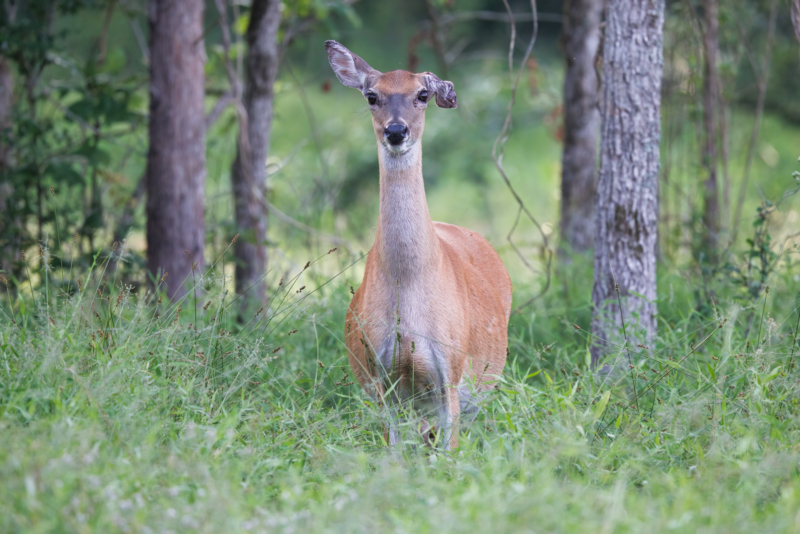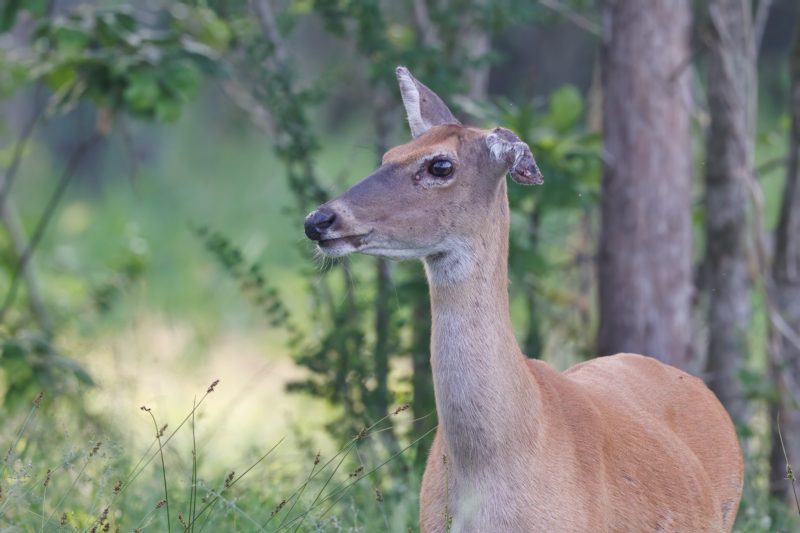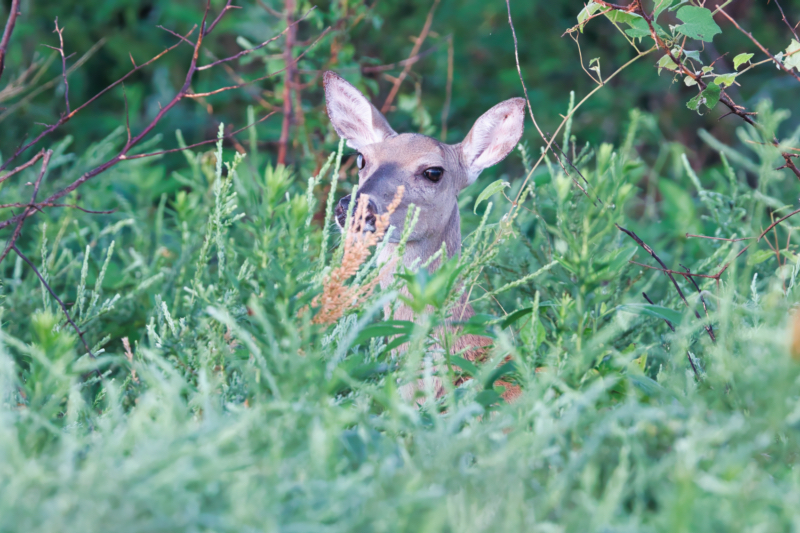Today I want to share three photos I recently took of injured white-tailed does. As a wildlife photographer, I often encounter animals that have sustained injuries but continue to survive and adapt.


The first two photos are of a doe I spotted at the Janet Huckabee Arkansas River Valley Nature Center. This poor doe had a badly mangled ear that looked like it had been put through a meat grinder. It had healed in a twisted, gnarled way. A man walking his dog on one of the trails told me about seeing this deer with the deformed ear. After hearing about her, I went back the next day and was able to locate and photograph her.

The second injured doe was photographed at the Sequoyah National Wildlife Refuge in Oklahoma. If you look closely at the photo, you can see that the doe appears to be blind in one eye. The eye looks cloudy and dead. I have seen this condition before in white-tailed deer. It is likely she sustained an injury, infection or was born with a congenital defect.
As a wildlife photographer, I document many injured animals in their natural habitats. It always amazes me how resilient these creatures are and their ability to adapt and survive even severe injuries and disabilities. The white-tailed deer is particularly abundant because it is highly adaptable. While unfortunate, it is uplifting to see these does overcoming their physical challenges to continue living in the wild. I feel privileged to be able to photograph them and share a glimpse into their lives. Their survival stories are inspiring.
Steve Creek, Wildlife Photographer
Gear Used:
- Camera: Canon EOS R5
- Lens: Canon RF 100-500 mm F4.5-7.1 L IS USM
Technical: First Photo Only
- Location: Janet Huckabee Arkansas River Valley Nature Center (Arkansas)
- Date and Time Taken: May 30 2023 (07:46 A. M.)
- Aperture: f7.1
- Shutter speed: 1/800
- ISO: 4000 (Auto)
- Exposure Compensation: +0.3
- Focal Length: 500 mm
